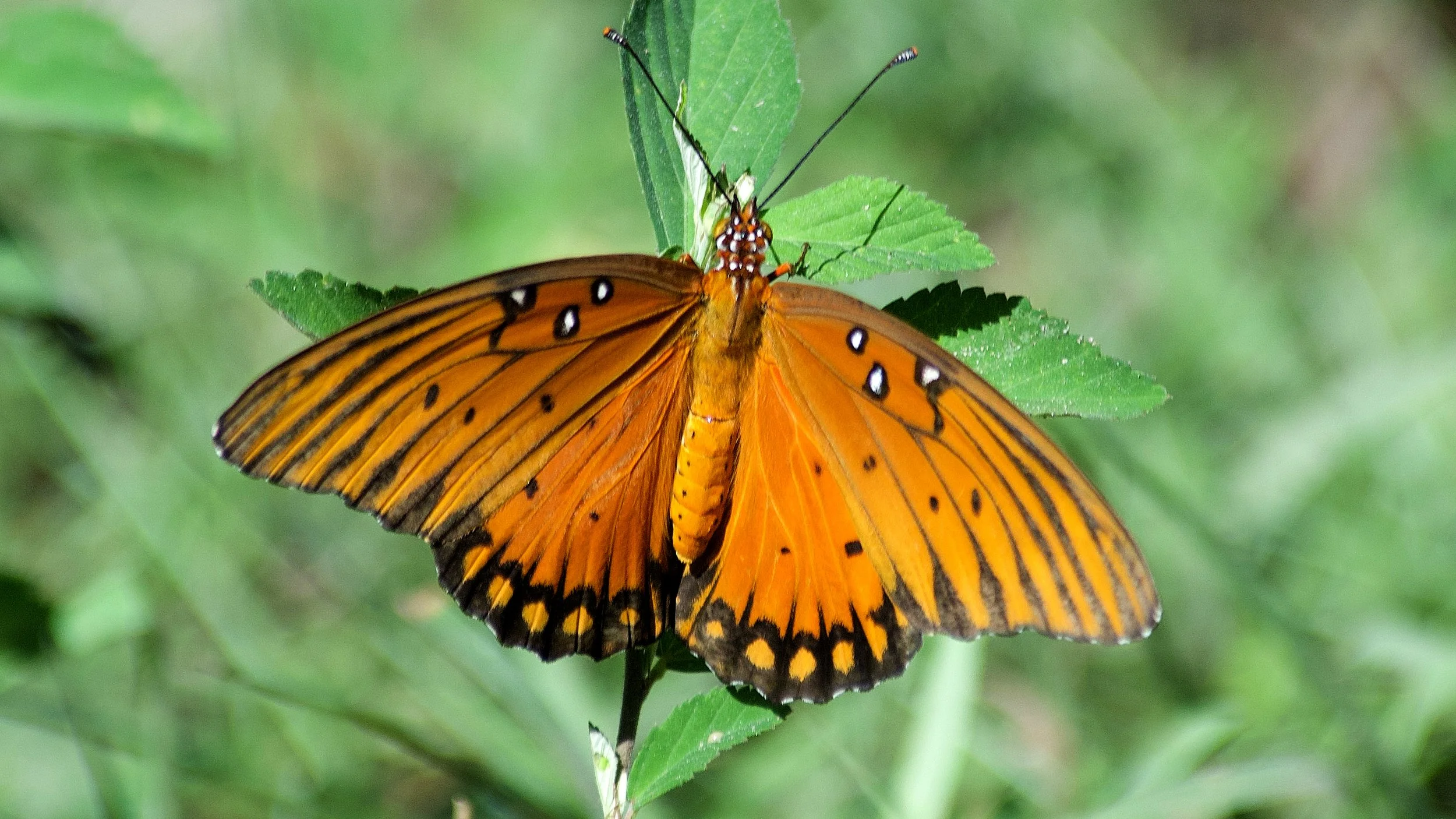Midsummer in the LCNP wildflower garden.
Welcome to the Native Flower Gardens at The Lorraine Cherry Nature Preserve. These gardens welcome butterflies, bees, and other beneficial insects by providing them with food and shelter. These native and adapted plants were chosen because they support a large number and wide variety of beneficial insects. In addition, we selected plants that bloom at different times throughout the growing season (early spring to late fall) in order to provide a steady food supply.
Pipevine Swallowtail at LCNP.
Spring at LCNP.
The location for the garden was selected to provide at least 6 hours of sunlight, an essential factor for flowering plants. The sunlight also helps butterflies, which are cold blooded, warm their bodies as they begin their day. The plants are arranged in clusters because butterflies, like many insects, are nearsighted and it is easier for them to spot clusters rather than single plants. At the end of the growing season, leaf litter and dead perennial plant material will be left in the garden until spring to provide the overwintering insects with some protection from predators, such as birds.
Sunflower in LCNP.
In addition to providing habitat for wildlife, these gardens help conserve water by growing native plants. When the gardens were created, we built healthy soil by using compost to incorporate organic matter. We have avoided synthetic fertilizers and pesticides that contribute to runoff pollution. By allowing the leaf litter and dead perennial plant material to remain in the garden over the winter, the garden produces its own compost yearly. These gardens provide an excellent example of the types of eco-friendly choices you can make in your own landscape at home.




